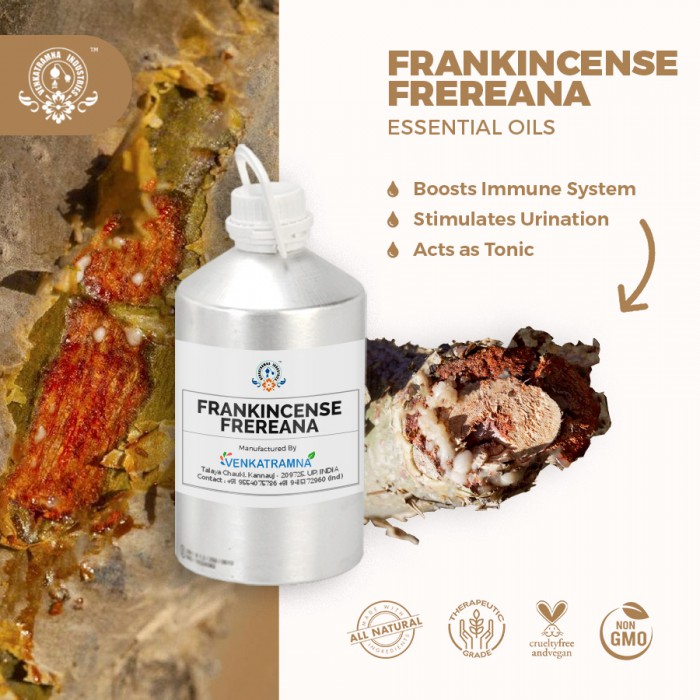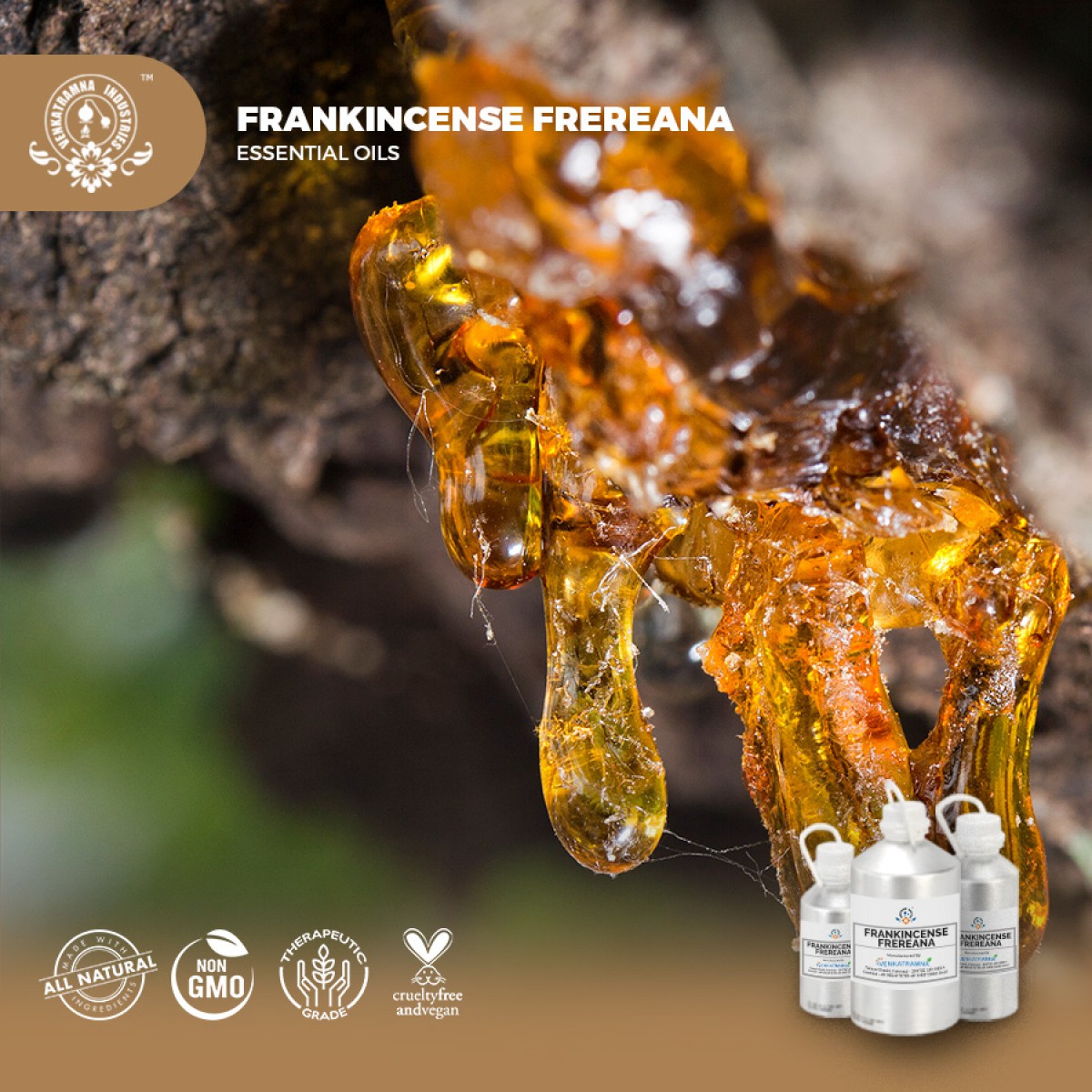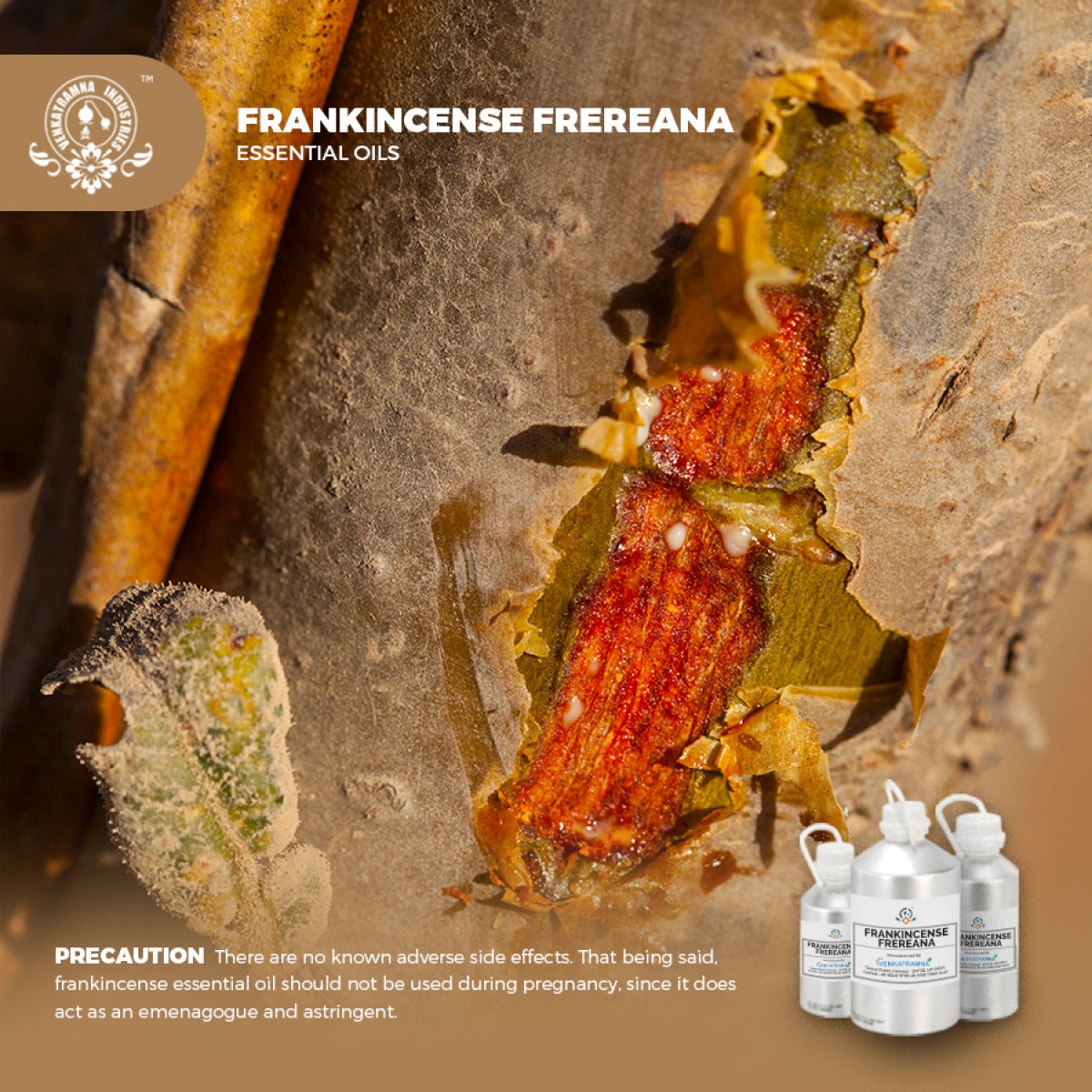Botanical Name: Boswellia frereana Common name: Dhidin, Maydi, Yigaar, frankincense Read More
|
Botanical Name: |
Boswellia frereana |
|
Common name: |
Dhidin, Maydi, Yigaar, frankincense |
|
Plant family: |
Burseraceae |
|
Genus: |
Boswellia |
|
Appearance/Color: |
Colorless to
pale yellow liquid |
|
Odor: |
A base note with a
medium aroma, Frankincense Essential Oil has a warm and spicy, woody odor
that is haunting |
|
Blends With: |
Basil, Bergamot, Cardamom, Cedarwood, Chamomile, Cinnamon
Bark, Clary Sage, Coriander, Geranium, Ginger, Myrrh and Vanilla |
|
Origin: |
India |
|
Source: |
Resin |
|
Method of
Extraction: |
Solvent |
Genus Boswellia is a genus in the Burseraceae family.
The genus is widespread in dry areas such as Arabia, northeastern coast of
Africa, and India. The species have been useful in traditional medicine for
treatment of in?ammatory diseases, including asthma, arthritis, cerebral edema,
chronic pain syndrome, gastrointestinal disease, tumors, and for
enhancing memory and learning function.
Frankincense, or olibanum, is the oleogum resin that is harvested from several different trees belonging to the genus Boswellia. The word frankincense is derived from the ancient French name “frankincense,” meaning “pure incense.” Frankincense is also known in Arabic as “luban,” which means “white” or “cream;” in Greek as “libanos;” in Ethiopia as “etan”. Olibanum (frankincense) has been used as incense since ancient times. In recent years, it has been important in the preparation of cosmetics and perfumes. In addition, olibanum has anti-inflammatory, sedative, anti-hyperlipidemic, and antibacterial activities in Unani (Islamic) and Chinese traditional medicines.
DISCLAIMER
The complete range of conditions
or methods of use are beyond our control therefore we do not assume any
responsibility and expressly disclaim any liability for any use of this
product. Information contained herein is believed to be true and accurate however,
all statements or suggestions are made without warranty, expressed or implied,
regarding accuracy of the information, the hazards connected with the use of
the material or the results to be obtained from the use thereof. Compliance
with all applicable federal, state, and local laws and local regulations
remains the responsibility of the user.
The FDA has not evaluated the
statements on this website. No claims are made by Venkatramna Industries as to
the medicinal value of any products from vriaroma.com or by us. The information
presented here is for educating our customers about the traditional uses of
essential oils and is not intended to diagnose, treat, cure, or prevent any
disease. You are responsible for understanding the safe application of these products.
If you have any questions, please call or email us for further information.
As per NAHA guidelines, New Directions Aromatics
(NDA) does not recommend the ingestion of essential oils. It is imperative to
consult a medical practitioner before using Essential Oils for therapeutic
purposes. Pregnant and nursing women and those taking prescription drugs are
especially advised not to use this product without the medical advice of a
physician. The oil should always be stored in an area that is inaccessible to
children, especially those under the age of 7.
Since time immemorial, plants and their products have been
the primary resource of food, shelter, clothing, flavors, fragrances as also
valuable ingredients for medicines for mankind. In this context, natural resins
have played an important role. These have also been used as adhesives, as
ingredients for cosmetic preparations, as fragrances in daily rituals and in
religious ceremonies, as coating materials and also for their different
curative powers. The Frankincense resins are the common resins used since
ancient times.
Frankincense Essential Oil in
Pharma
In addition to its beneficial use for arthritis, this gummy
resin is also mentioned in traditional Ayurvedic and Unani texts as an
effective remedy for diarrhoea, dysentery, ringworm, boils, fevers
(antipyretic), skin and blood diseases, cardiovascular diseases, mouth sores,
bad throat, bronchitis, asthma, cough, vaginal discharges, hair-loss, jaundice,
hemorrhoids, syphilitic diseases, irregular menses and stimulation of liver. It
is also diaphoretic, astringent, diuretic and acts both as internal and external
stimulant. Modern medicine and pharmacology strongly point out to its use as an
antiarthritic, antiinflammatory, antihyperlipidemic (controls blood lipids),
antiatherosclerotic (anticoronary plaque), analgesic (pain-reliever) and
hepatoprotective (protects the liver).
Essence of Frankincense
Essential Oil
The resin of Boswellia species
(‘frankincense’, ‘olibanum’) has been used as incense in religious and cultural
ceremonies since time immemorial. Its medicinal properties are also widely
recognized, mainly for the treatment of inflammatory conditions, as well as in
some cancerous diseases, wound healing and its antimicrobial activity.
COMMON USAGE
·
Anti-inflammatory
·
Boosts immune system
·
Astringent property
·
Regulates menstruations
·
Prevents gas buildup
·
Promotes digestion
·
Delays aging
·
Acts as tonic
·
Stimulates urination
·
Keeps uterus healthy
·
Speeds up healing
Ingredients:
|
S.No |
Key Constituents |
Strength (%) |
|
1 |
a-pinene |
41.7-80.0 |
|
2 |
Sabinene |
0.5-21.0 |
|
3 |
a-thujene |
0-19.3 |
|
4 |
(P)-limonene |
0-17.0 |
|
5 |
viridiflorol |
0-15.2 |
|
6 |
p-cymene |
0.7-11.7 |
|
7 |
b-pinene |
0-6.9 |
|
8 |
Verbenone |
0-6.5 |
|
9 |
b-myrcene |
0-6.0 |
|
10 |
a-phellandrene |
0-5.9 |
|
11 |
Bornyl acetate |
0-5.6 |
|
12 |
Carvone |
0-4.4 |
|
13 |
d-3-carene |
0-3.4 |
|
14 |
Linalool |
0-3.0 |
|
15 |
1,8-cineole |
0-2.9 |
|
16 |
g-terpinene |
0-2.5 |
|
17 |
camphene |
0-2.1 |
|
18 |
Thujol |
0-1.8 |
|
19 |
a-pinocarveol |
0-1.7 |
|
20 |
Campholenic aldehyde |
0-1.5 |
|
21 |
Octyl acetate |
0-1.5 |
|
22 |
a-terpinene |
0-1.5 |
|
23 |
b-elemene |
0-1.3 |
|
24 |
b-caryophyllene |
0-1.2 |
|
25 |
a-thujone |
0-1.2 |
|
26 |
(Z)-b-ocimene |
0-1.0 |
|
27 |
b-phellandrene |
0-1.0 |
|
28 |
b-selinene |
0-1.0 |
TOXICOLOGICAL INFORMATION
Safety Summary
Systemic Effects
ECOLOGICAL INFORMATION
Acute fish toxicity:
LC50 / 96 HOUR – No data available
Toxicity to aquatic plants – No data available
Toxicity to microorganisms – No data available
Toxicity threshold – No data available
Do not allow the material to enter streams, sewers or other waterways.





 MSDS-Frankincense1.pdf
MSDS-Frankincense1.pdf




